Keeping up with Governance, Risk, and Compliance (GRC) requirements within an organization can be challenging, as it involves a range of practices that go from meeting regulatory standards to addressing cybersecurity threats. In this context, incorporating GRC automation becomes essential to streamline overall protection and compliance.
The significance of this topic is undeniable, especially because global Security and Risk Management spending is expected to grow 14% in 2024. As the regulatory and technological environment keeps evolving, according to Gartner, organizations are looking to “secure new environments, protect against the expanded attack, consume security capabilities in new ways, and create better efficiencies through automation.”
In this article, we will delve deeply into GRC automation, explore how this practice relates to IT Asset Management (ITAM), and show you how to implement it with InvGate Asset Management in just a few steps.
Let’s get started!

What is GRC automation?
In short, GRC automation implies leveraging technology to streamline key activities, making them more accurate and efficient, and therefore helping organizations avoid consequences such as service interruption or penalties.
Particularly in GRC, some practices require only a one-time configuration process, while many others demand continuous monitoring and oversight to prevent cybersecurity breaches or compliance incidents, for instance. For this, implementing GRC automation can be a game changer.
The approach includes a suite of integrated functions, typically found within comprehensive ITAM software, designed to oversee an organization's compliance requirements, Risk Management protocols, and governance policies effectively across departments.
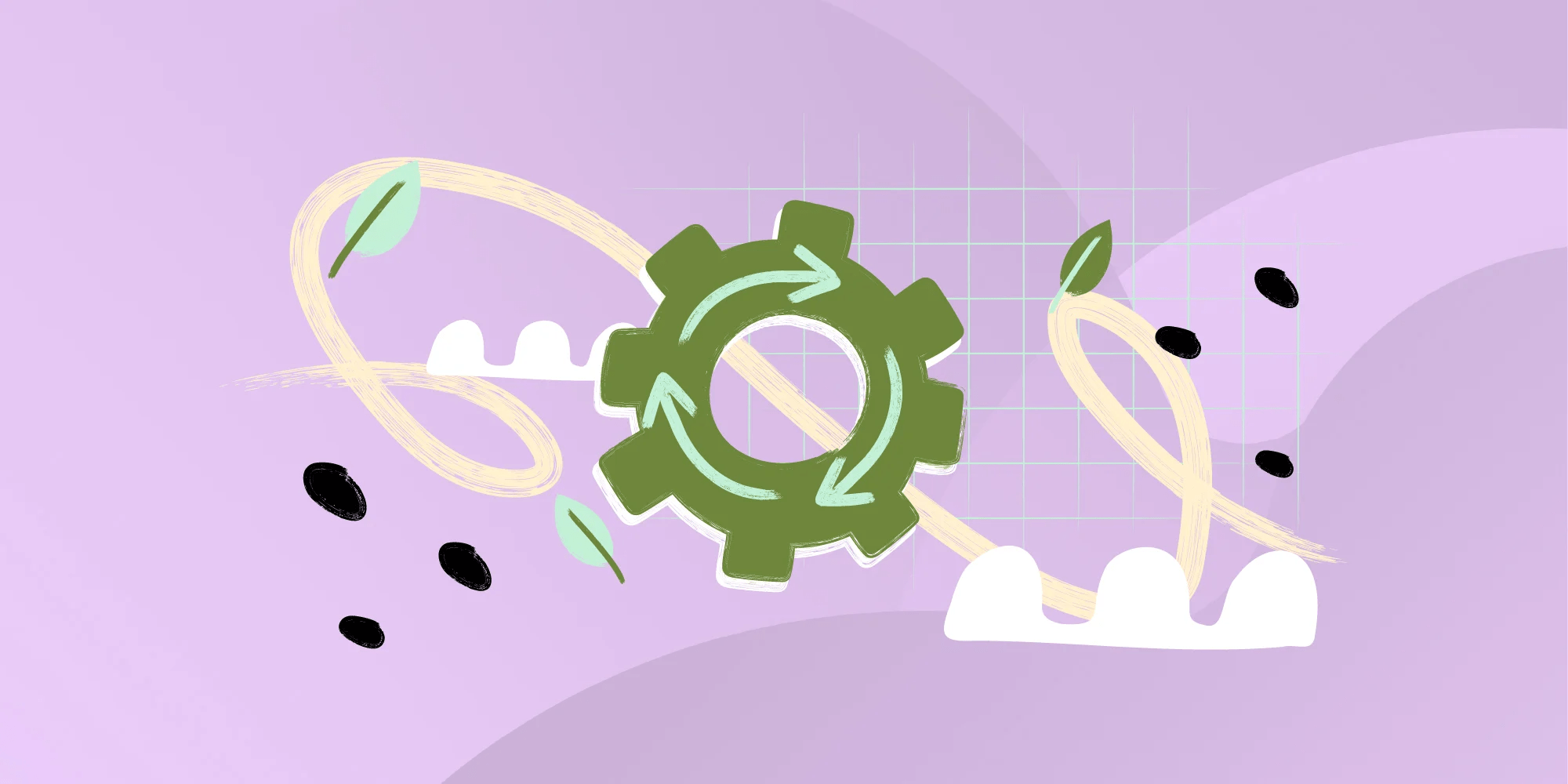
Why do you need to automate GRC Management?
In today's fast-paced business landscape, automation transcends being merely a helpful tool; it's a necessity for organizations aiming to maintain efficiency, security, and compliance across all departments, not just within IT.
In this sense, GRC automation offers significant advantages, whether for small to medium-sized enterprises monitoring assets, large-scale organizations navigating intricate regulatory landscapes across regions, or non-profits aiming to minimize human error and cybersecurity threats.
Benefits of GRC Automation
It’s evident that automating GRC practices boosts efficiency and security. But there's more to it—let's look at the main benefits of implementing these measures:
- Ensured business continuity – For instance, automating asset discovery facilitates periodic network scans, alerting you to unauthorized hardware and software that could potentially disrupt your operations.
- Enhanced efficiency – Streamlines processes reducing manual efforts and enabling teams to concentrate on strategic initiatives while minimizing human error.
- More consistent compliance – Guarantees adherence to regulatory requirements, contract obligations, due dates, and mandatory standards throughout the organization.
- Stronger Risk Management– Identifies and promptly addresses potential risks, reinforcing the organization's resilience and reducing Incident Management efforts.
- Improved transparency – Offers real-time insights and robust reporting capabilities, enhancing visibility into GRC activities.
- Cost Savings – Reduces operational costs linked to manual processes and potential non-compliance penalties.
Challenges of automating GRC
While GRC automation offers numerous benefits, a few challenges may arise during this process. Here are some common obstacles (and ways to overcome them):
- Lack of clear procedures – One significant difficulty in implementing GRC automation is the absence of established procedures within an organization. Before diving into automation, having well-documented processes in place is crucial.
In this case, implementing Asset Management Standard Operating Procedures (SOPs) as a first step is invaluable for systematizing working practices, ensuring a consistent experience for agents and end-users. With a clear view of your organization's procedure steps, it will be easier to see which ones to automate. - Implementation hurdles – Introducing GRC automation can face obstacles like change resistance, system integration complexities, and ensuring user adoption across teams. Crucial steps for a successful GRC implementation include assembling an effective team, setting clear goals, and selecting the appropriate GRC technology.
- The right GRC software – There are many comprehensive GRC solutions, so it can be challenging to know which one to choose. It is vital that the one you pick meets your needs. Some fundamental features to look for are Inventory Management, software compliance features, Contract Lifecycle Management, and reporting capabilities, among others.
Organizations also encounter challenges when looking to safeguard sensitive data. So, when looking for the right tool, be sure the GRC automation system of your choice offers robust governance, risk assessment, and regulatory adherence capabilities, as well as providing both on-cloud and on-premise options to align with your organization's data governance requirements.
How to automate IT GRC?
Automating IT Governance, Risk, and Compliance relies on a series of crucial elements. Take the following steps into consideration before implementing GRC automation to make sure you apply a seamless process within your organization:
- Assess and plan – Evaluate your organization's current GRC processes, identify areas for improvement, and define specific objectives for automation.
- Select suitable GRC automation tools – Choose GRC platforms that align with your organization's requirements, focusing on features like Risk Management, compliance monitoring, reporting capabilities, and integration with existing systems.
- Configure and customize – Tailor the selected GRC automation tools to meet your organization's specific needs, configuring workflows, templates, and reporting mechanisms to align with regulatory requirements and internal policies.
- Train for user adoption – Provide comprehensive training to relevant organization members, including IT staff, compliance officers, and management teams, to ensure effective use of GRC automation tools.
- Keep improving – Implement regular monitoring and evaluation processes with comprehensive reporting to analyze the effectiveness of automated GRC initiatives, identify areas for enhancement, and make necessary adjustments to optimize performance continually.

GRC automation tools
By now, you've likely learnt that GRC automation requires a thorough assessment and an efficient GRC platform that encompasses some key functionalities. As we mentioned, an exhaustive IT Asset Management software is the most complete way to protect and automate GRC Management functions.
Let's explore how InvGate Asset Management can help you succeed in your GRC automation process through the following functions:
- Inventory Consolidation – GRC automation begins with establishing a comprehensive IT asset inventory, a process expedited by InvGate Asset Management's features. Within 24 hours, you can ensure that every component within your environment is cataloged and managed effectively.
- Software Compliance Feature – Monitoring software assets is integral to GRC automation. InvGate Asset Management's Software Compliance module scrutinizes software deployments, flagging any non-compliant or underutilized systems, thereby enhancing license optimization and regulatory adherence.
- Contract Lifecycle Management – Ensuring contractual compliance is pivotal in GRC automation. InvGate Asset Management enables proactive management of asset contracts, mitigating compliance risks and averting potential penalties through timely renewals and oversight.
- Robust Reporting Capabilities – GRC automation thrives on informed decision-making, with a need for comprehensive reporting functionalities. InvGate Asset Management consolidates pertinent data, enabling holistic assessments to pinpoint vulnerabilities, gaps, and improvement avenues, which are invaluable for audit preparedness.
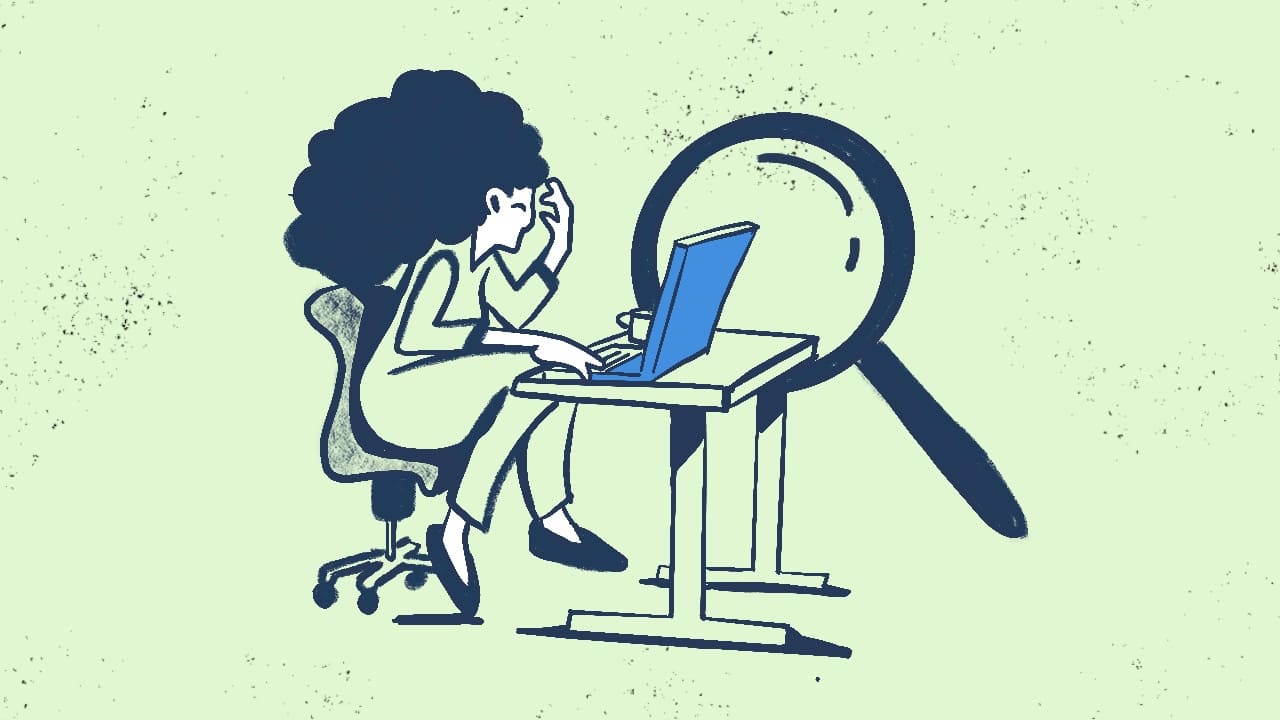
4 GRC automation ideas to protect your organization
Now that we have explained some of InvGate Asset Management’s capabilities to automate GRC, here are some extra functionalities to protect your organization through InvGate Asset Management while enhancing your GRC practice.
1. Automate IT Asset Discovery
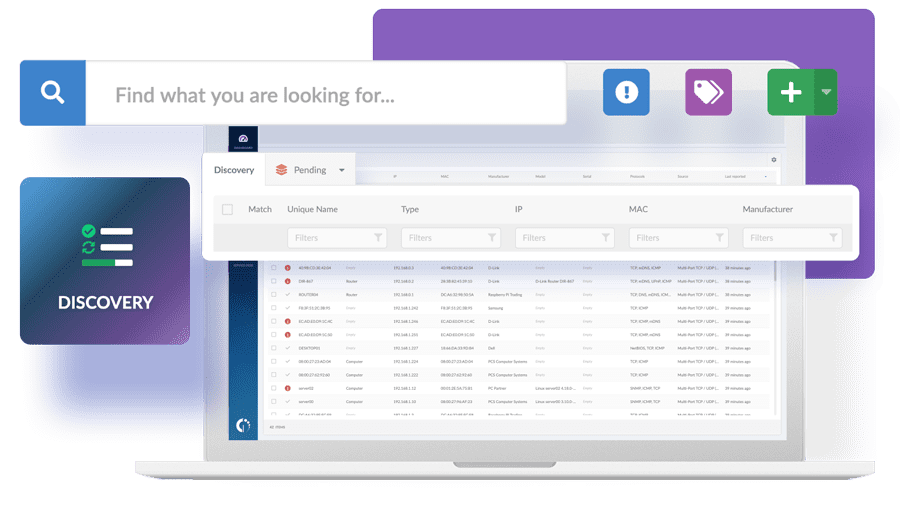
A cornerstone in the realm of GRC automation is the IT Asset Discovery function, vital for organizations aiming to streamline their IT Infrastructure Management while documenting business continuity and delivering disaster recovery support.
This key ally operates autonomously, identifying and cataloging hardware and software components throughout their lifecycle within the organization. By leveraging this automation, you can not only create a centralized asset inventory but bypass tedious manual tracking and data entry tasks while protecting your organization from unwanted devices.
2. Streamline your reports
Exhaustive monitoring and reporting are the only ways to really see the whole GRC picture within your organization. The good news is that InvGate Asset Management provides you the chance to tailor these functions in order to gain comprehensive insights into governance, compliance, and risk information, as well as tendencies – that you receive directly in your inbox.
Some valuable ways to seize InvGate Asset Management’s GRC reporting capabilities:
- Customizable dashboards – Get a daily snapshot of what’s going on in your organization, customizable to display pertinent ITAM and GRC metrics, enabling you to take urgent actions when necessary.
- The software compliance dashboard – Particularly important to maintain compliance, this feature stands out for monitoring license alignment, seamlessly integrating contract details with software metering data, and facilitating efficient License Management.
- Reliable insights – Reports can focus on specific KPIs over defined periods, aiding in analyzing past performance, recognizing trends, and pinpointing areas for improvement. You can automate its distribution and send it periodically to interested parties.
3. Automate Risk Management
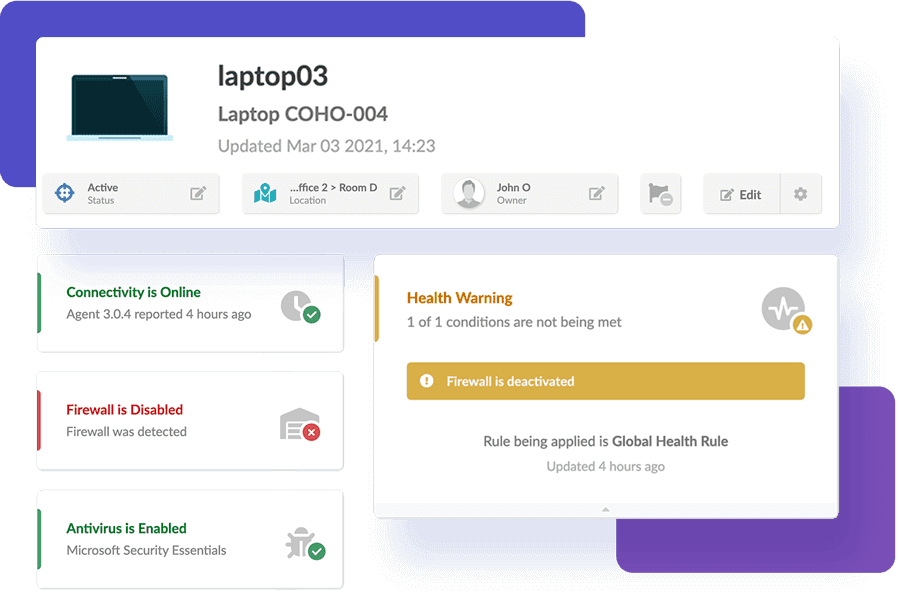
Another significant measure to ensure GRC is to use Risk Management automation through distinct features tailored to enhance protection and efficiency
Let’s explore how to use InvGate Asset Management to automate Risk Management:
- Asset Health Rules – These rules provide an immediate assessment of your devices' status, indicating their compliance and status. By using predefined criteria, they monitor aspects like firewall integrity, antivirus functionality, disk space, encryption, and more. The color-coded system simplifies identification: green signifies safety, yellow indicates caution, and red flags critical issues. Customizable based on asset criticality, these rules allow tailored monitoring and alerting.
- Smart tags – Designed for categorizing Configuration Items (CIs), smart tags offer a streamlined inventory view. Once configured, these personalized labels enable quick searches, allowing users to pinpoint assets matching specific criteria. To activate, users need to navigate to Settings, define mandatory fields like name, description, and color, and set triggering parameters. Once saved, Smart Tags automatically associate with CIs that meet the established criteria.
- Compliance Management – InvGate Asset Management facilitates automated compliance management by tagging devices requiring adherence to specific standards like the Payment Card Industry Data Security Standard (PCI DSS). Through this automation, factors like security settings, encryption levels, and software versions undergo continuous verification, easing audit processes.
4. Enhance workflows through automation
GRC goes beyond merely protecting your assets and infrastructure. By integrating ITSM with ITAM, specifically through combining InvGate Asset Management with InvGate Service Management, you can establish automated workflows that align seamlessly with a robust GRC program.
With that said, workflow automation streamlines organizational processes by using software to handle repetitive tasks, aiming to boost efficiency and precision.
Several key workflows that stand out in the realm of GRC automation:
- IT Asset Management workflow – Implementing automation in IT Asset Management streamlines tracking, maintenance, and lifecycle processes, optimizing resource utilization and curtailing costs.
- Contract Management workflow – Automate contract creation, approval, and renewal processes to mitigate delays and uphold compliance with stipulated terms and conditions.
- Risk Management workflow – InvGate Service Management simplifies the initial reporting of risks such as attacks, breaches, or system failures by employees. These records then integrate seamlessly into predefined workflows, ensuring systematic and efficient handling of identified risks. When categorizing a risk-related ticket, automated workflow steps are activated, providing consistency and flexibility for teams to adapt as needed.
- Change Management workflow – Automate the approval and execution of alterations to IT infrastructure, applications, and services. This ensures efficient tracking, testing, and deployment of changes while safeguarding sensitive data.
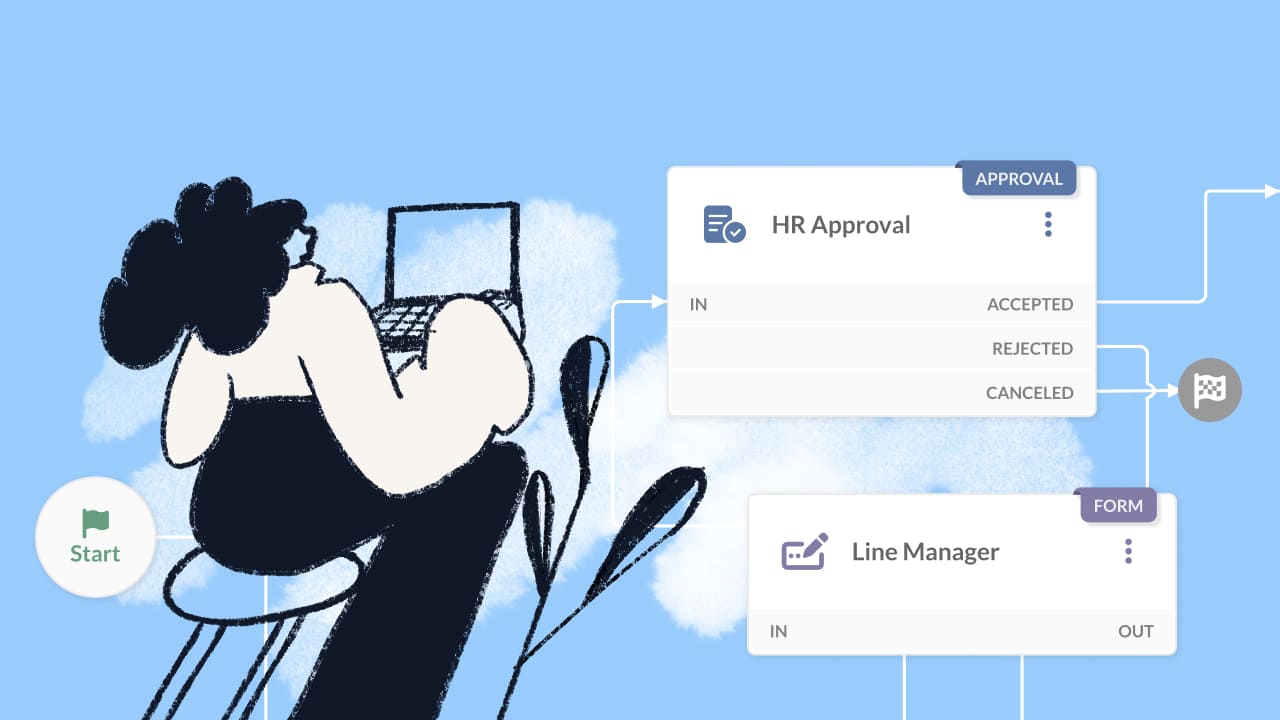
As you can see, the beauty of workflow automation lies in its adaptability – and InvGate Service Management stands out in this field for its Low-Code/No-Code customization features, making it intuitive for users to implement it.
It is also worth mentioning that InvGate Service Management provides robust features to ensure the protection of personal and sensitive data. For instance, within an onboarding workflow that may need social security numbers, only HR personnel, who oversee this workflow, can access such confidential information.
Furthermore, the platform's user-friendly administration capabilities allow organizations to effortlessly integrate specific GRC requirements into the system. This empowers teams to effectively establish, support, and enforce controls over IT processes.
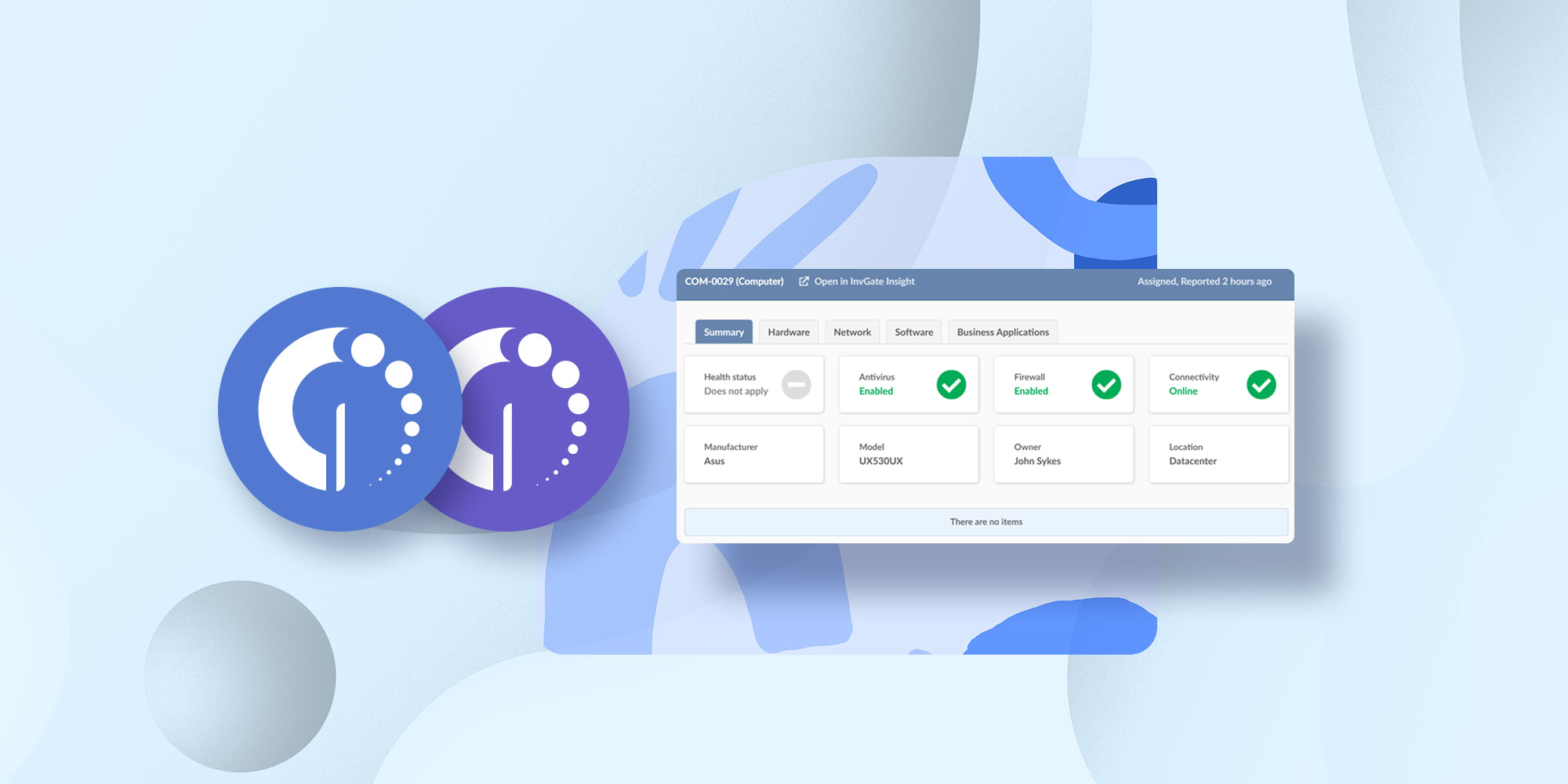
GRC and Asset Management
Although automation is vital, there are other critical aspects of ITAM that can benefit and strengthen your GRC Management. Here are the most significant ones:
Configuration Management Database (CMDB)

Implementing GRC automation demands a clear view of your IT landscape, which is where creating a Configuration Management Database (CMDB) becomes vital. This CMDB serves as a visual representation of your CIs and their relationships, enabling you to identify risks, vulnerabilities, and areas for improvement.
InvGate Asset Management allows you to incorporate a wide array of business applications, such as your network and cloud environments. By adding CIs and establishing relationships and dependencies among them, you can construct a structured CMDB that, once configured, can reflect any modifications to your assets and present a comprehensive diagram of its architecture.
Endpoint Security
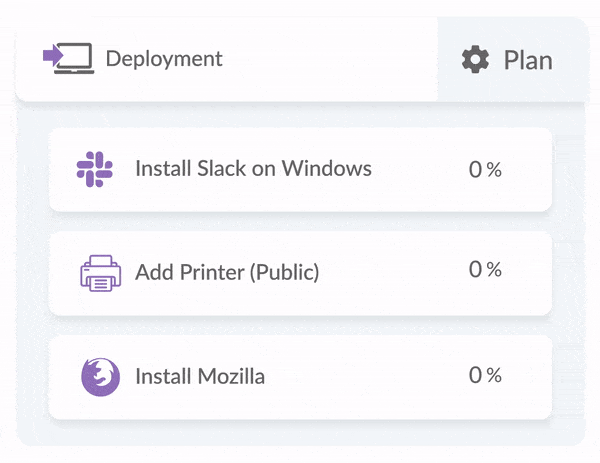
Another way to mitigate risk is by enhancing your endpoint security. InvGate Asset Management protects your assets through its latest beta feature, software deployment, which gives IT teams access to specific functions like blocking USB ports or running remote scripts on Windows devices to ensure security.
Internal audits
Another helpful element from ITAM related to GRC relates to performing internal audits in order to ensure you're in compliance with software licenses.
If you associate the contracts with the corresponding assets and software installed across your network, InvGate Asset Management’s software compliance module quickly displays where you are under-licensed and where you are over-licensed, also helping you save money in the process.
GRC operational aspects
As mentioned before, InvGate Asset Management’s integration with InvGate Service Management provides several necessary tools to obtain a robust GRC strategy.
It goes without saying, but efficient Incident Management and response is a pretty common need for GRC practices, and InvGate Service Management makes it easy for users to capture or upload pictures or documents as soon as they identify risks, system failure, and phishing, among other safety concerns.
With only a few clicks, employees can report hazards in the workplace, making it easy for teams to track incidents using predefined workflows or go off script and resolve them manually. And, as we are talking about automation, all these incident reports can be automated, so in the future, these steps are already prebuilt and can be immediately resolved.
Key takeaways
In an ever-changing organizational environment, keeping up with Governance, Risk, and Compliance requirements can’t be overlooked. Organizations should evaluate their GRC practices and dive into GRC automation with a bit of help from an exhaustive ITAM software.
Let’s dive into the main points to understand the whys and hows of GRC automation:
- GRC Automation in a nutshell – GRC automation is not merely an option but a necessity for organizations, as it ensures efficiency, security, and compliance across various sectors. It encapsulates practices from regulatory adherence to cybersecurity defense mechanisms.
- Automation benefits – Automating GRC practices offers numerous advantages, such as ensuring business continuity, enhancing efficiency, guaranteeing consistent compliance, and facilitating risk assessment and mitigation.
- Challenges and solutions – While the journey of GRC automation presents its share of difficulties (like software selection, integration complexities, and ensuring data governance), strategic planning, a proper tool, and continuous improvement strategies emerge as solutions.
- Enhancing GRC with InvGate Asset Management – InvGate Asset Management emerges as a robust platform for GRC automation, offering features like inventory consolidation, software compliance monitoring, contract lifecycle management, and comprehensive reporting capabilities. Its integration with InvGate Service Management further amplifies its utility, particularly in Incident Management and IT Change Management workflows.
In essence, GRC automation is pivotal for organizations aiming to navigate the intricate landscapes of Governance, Risk, and Compliance seamlessly. Leveraging platforms like InvGate Asset Management facilitates this journey by providing tailored solutions and robust functionalities.
Looking to keep your organization safe and compliant? Remember, you can sign up for InvGate Asset Management’s 30-day free trial and kick-start your GRC automation journey.















